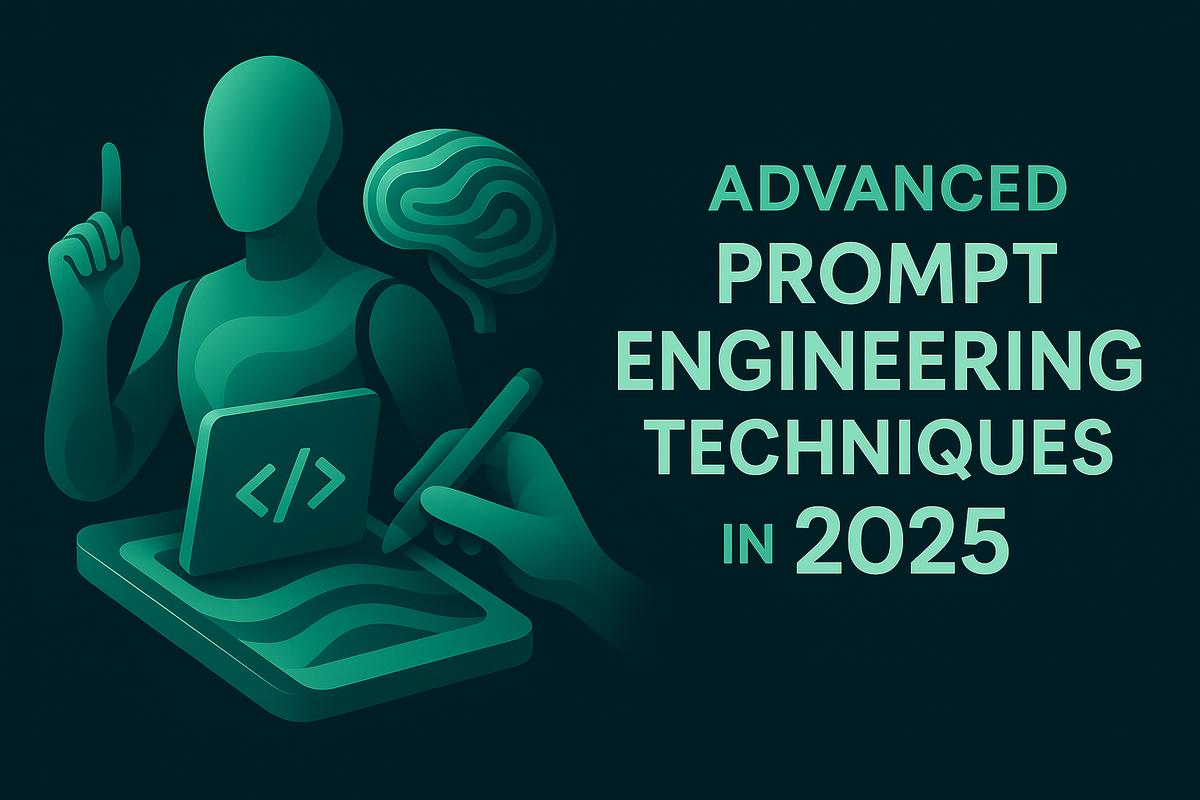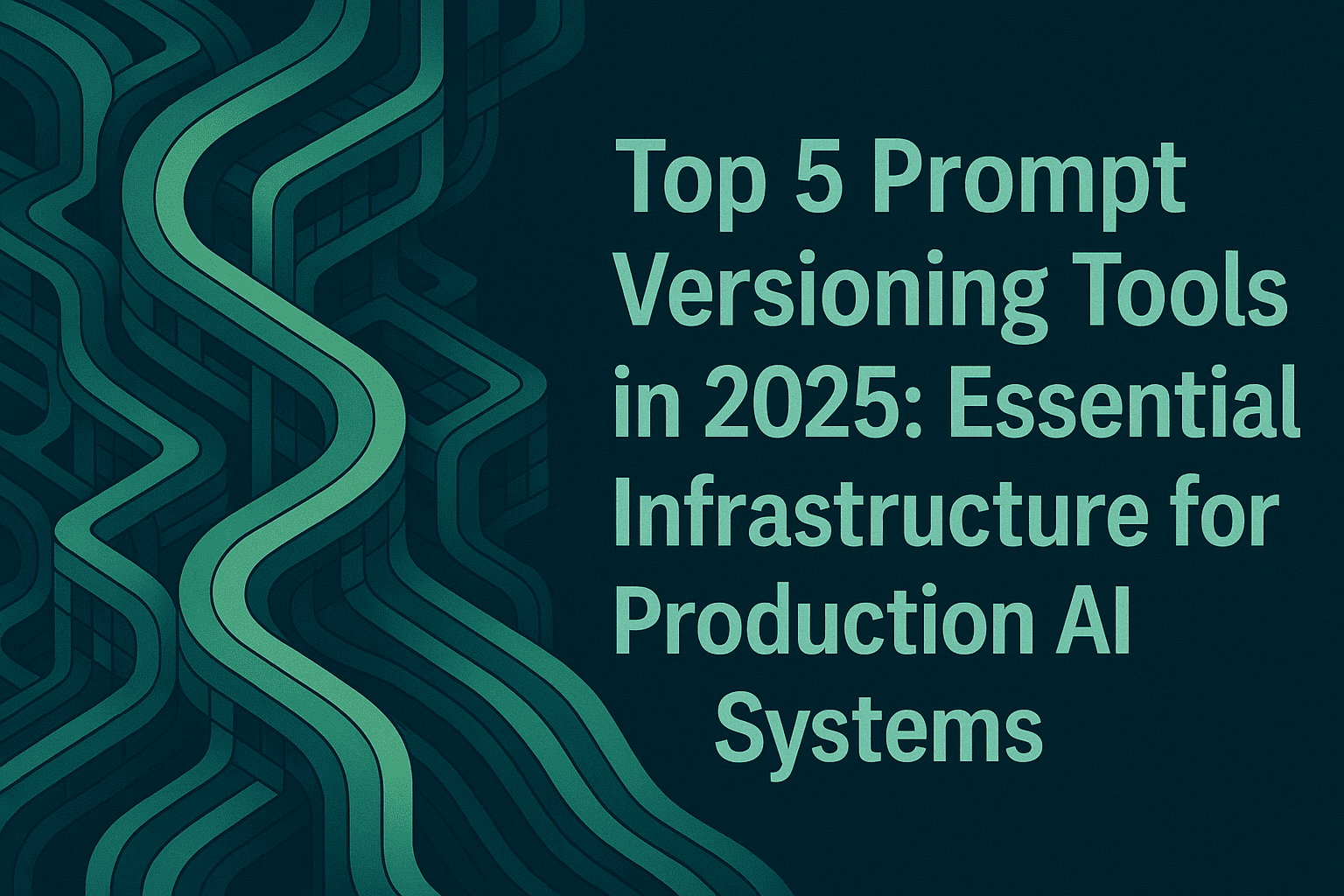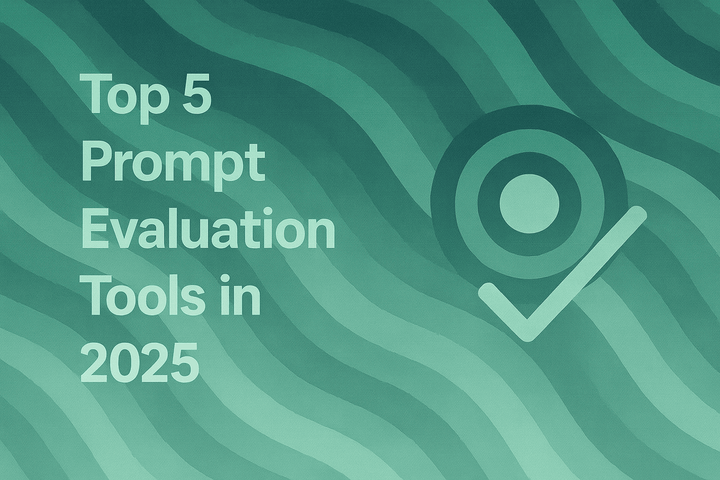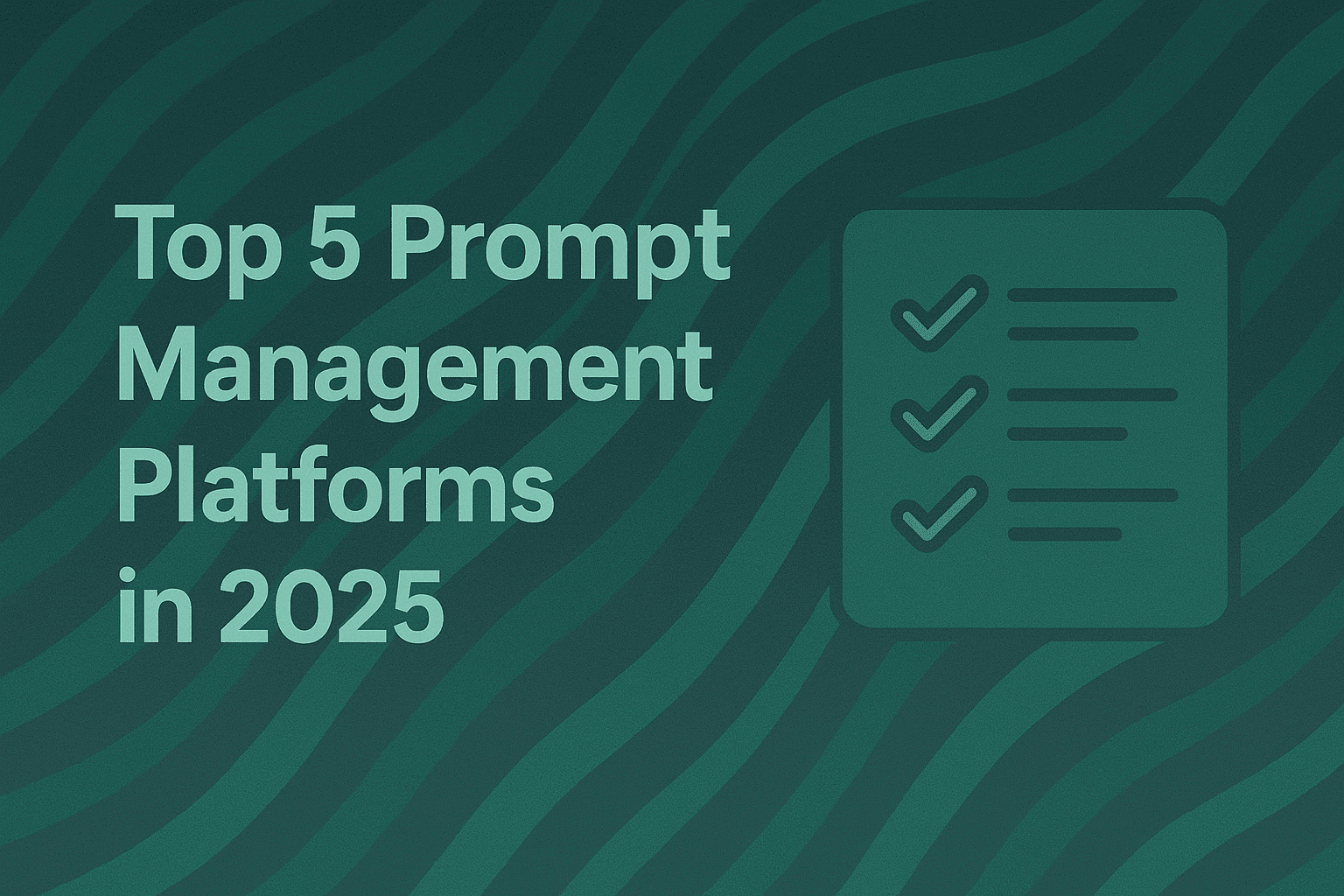Advanced Prompt Engineering Techniques in 2025

Prompt engineering has evolved from a trial-and-error practice into a systematic discipline backed by rigorous research. As organizations deploy increasingly complex AI applications (from conversational agents to multi-agent systems) the gap between experimental prompting and production-grade prompt management has become critical. This comprehensive guide examines state-of-the-art prompt engineering techniques, explores the science behind prompt sensitivity, and addresses the challenges of scaling prompts from development to production.
The Science Behind Prompt Engineering
Recent systematic surveys have cataloged 58 distinct LLM prompting techniques, signaling prompt engineering's maturation from ad-hoc experimentation to structured methodology. Prompt engineering has emerged as an indispensable technique for extending the capabilities of large language models and vision-language models, leveraging task-specific instructions to enhance model efficacy without modifying core model parameters.
Unlike fine-tuning, which updates model weights, prompt engineering operates by eliciting desired behaviors solely through carefully crafted inputs. This distinction makes prompting particularly valuable for organizations that need to adapt pre-trained models to downstream tasks without the computational expense of retraining.
However, the effectiveness of prompts is far from uniform. Research consistently demonstrates that LLMs are highly sensitive to subtle variations in prompt formatting and structure, with studies showing up to 76 accuracy points across formatting changes in few-shot settings. This sensitivity persists even with larger model sizes, additional few-shot examples, or instruction tuning, a phenomenon we term the sensitivity-consistency paradox.
Foundational Prompting Techniques
Zero-Shot Prompting
Zero-shot prompting provides models with direct instructions without additional context or examples. In 2018, researchers first proposed that all previously separate tasks in natural language processing could be cast as a question-answering problem over a context. This foundational insight enables models to generalize across tasks without task-specific training.
While zero-shot prompting offers simplicity and flexibility, its effectiveness varies significantly across task complexity. Simple factual queries, translations, and summarizations often succeed with zero-shot approaches, but complex reasoning tasks typically require more sophisticated techniques.
Few-Shot In-Context Learning
In-context learning refers to a model's ability to temporarily learn from prompts by providing the model with a few examples for a model to learn from. For instance, a prompt might include examples like "maison → house, chat → cat, chien →" to establish a translation pattern.
In-context learning is an emergent ability of large language models, emerging as a property of model scale where its efficacy increases at a different rate in larger models than in smaller models. Unlike training and fine-tuning, in-context learning is temporary, the learned patterns disappear once the conversation context resets.
Chain-of-Thought Prompting
According to Google Research, chain-of-thought prompting is a technique that allows large language models to solve a problem as a series of intermediate steps before giving a final answer. In 2022, Google Brain reported that CoT prompting improves reasoning ability by inducing models to answer multi-step problems with steps of reasoning that mimic a train of thought.
The technique exists in two forms: few-shot CoT, which includes reasoning examples in the prompt, and zero-shot CoT, where simply appending the words "Let's think step-by-step" was also effective.
When applied to PaLM, a 540 billion parameter language model, CoT prompting significantly aided the model, allowing it to perform comparably with task-specific fine-tuned models on several tasks.
Advanced Prompting Techniques
Chain-of-Table for Structured Reasoning
The Chain-of-Table framework represents a significant advancement in table-based reasoning, where tabular data is explicitly used in the reasoning chain as a proxy for intermediate thoughts. Unlike traditional Chain-of-Thought approaches that rely on textual reasoning, Chain-of-Table leverages structured operations to transform tables iteratively.
The framework instructs LLMs to dynamically plan operation chains according to input tables and associated questions, with operations transforming tables to align with questions. These operations include adding columns, selecting rows, grouping, and sorting, common operations from SQL and DataFrame development.
Chain-of-Table consistently improves performance by 8.69% on TabFact and 6.72% on WikiTQ benchmark datasets, demonstrating the value of maintaining structured context throughout reasoning chains. This approach proves particularly effective for financial analysis, data analytics applications, and scenarios where intermediate computational results need explicit representation.
Self-Consistency and Tree-of-Thought
Self-Consistency performs several chain-of-thought rollouts, then selects the most commonly reached conclusion out of all the rollouts. This technique addresses the inherent variability in LLM outputs by generating multiple reasoning paths and using majority voting to determine the final answer.
Tree-of-thought prompting generalizes chain-of-thought by generating multiple lines of reasoning in parallel, with the ability to backtrack or explore other paths using tree search algorithms like breadth-first, depth-first, or beam search. This enables models to explore solution spaces more thoroughly, particularly valuable for complex problem-solving tasks where multiple valid approaches exist.
The Prompt Sensitivity Problem
The extreme sensitivity of LLMs to prompt variations presents both a challenge and an opportunity. Linguistic features significantly influence prompt effectiveness (such as morphology, syntax, and lexico-semantic changes) which meaningfully enhance task performance across a variety of tasks.
This sensitivity creates what we call the prompt engineering maturity model, where organizations progress through distinct stages:
Stage 1: Ad-hoc Experimentation - Individual developers craft prompts through trial and error, with limited documentation or version control. Success depends heavily on individual expertise and institutional knowledge remains siloed.
Stage 2: Template Standardization - Teams develop prompt templates for common use cases, establishing basic version control. However, prompt quality measurement remains largely subjective.
Stage 3: Systematic Evaluation - Organizations implement quantitative evaluation frameworks, enabling data-driven prompt optimization. LLM evaluation becomes integrated into development workflows.
Stage 4: Production Observability - Teams monitor prompt performance in production, using real-world data to identify regressions and optimization opportunities. AI observability closes the feedback loop between development and deployment.
Stage 5: Continuous Optimization - Organizations establish closed-loop systems where production data informs prompt improvements, which are systematically evaluated and deployed. Prompt management becomes a core competency.
Most organizations today operate between stages 1 and 2, creating significant technical debt as AI applications scale. The gap between experimental prompting and production requirements widens as applications move from prototypes to customer-facing systems.
Domain-Specific Applications
Medical and Scientific Applications
Prompt engineering is particularly crucial in the medical domain due to its specialized terminology and language complexity, with clinical natural language processing applications needing to navigate complex language while ensuring privacy compliance.
A scoping review of 114 recent prompt engineering studies found that prompt design is the most prevalent paradigm in medical applications, reflecting the high stakes of accuracy in healthcare settings. Medical prompting requires careful attention to factual accuracy, citation of sources, and clear delineation of model uncertainty.
Educational Applications
The effectiveness of generative AI tools in education depends largely on prompt engineering, the practice of designing inputs and interactions that guide AI systems to produce relevant, high-quality educational content. Educational prompting balances pedagogical goals with ethical considerations, ensuring AI tools support learning rather than replacing cognitive effort.
Tabular Data Analysis
The prevalence of structured data across finance, healthcare, and scientific domains makes tabular reasoning a critical capability. LLMs have revolutionized text generation, yet their reliance on limited, static training data hinders accurate responses, especially in tasks demanding external knowledge. Chain-of-Table and similar techniques address this limitation by maintaining structural integrity throughout reasoning processes.
The Production Challenge
The transition from development to production introduces distinct challenges that fundamentally differ from experimental prompt engineering. In development, engineers prioritize rapid iteration and exploration. In production, reliability, consistency, and auditability become paramount.
Prompt Versioning and Deployment
Production environments demand rigorous version control. When a prompt change degrades performance for a subset of users, teams need to identify exactly which version was deployed, when, and for which user segments. Manual tracking becomes untenable as the number of prompts scales.
Playground++ enables teams to organize and version prompts directly from the UI, deploying them with different variables and experimentation strategies without code changes. This bridges the gap between rapid iteration and production governance.
Quantitative Evaluation
Subjective assessment of prompt quality "this output looks better" fails in production contexts where thousands of prompts execute daily across diverse user inputs. Teams need quantitative metrics: accuracy, faithfulness, relevance, safety, and task-specific measures.
The evaluation framework challenge extends beyond metric selection to systematic execution. Running evaluations on large test suites across multiple prompt versions requires infrastructure that most organizations lack. Agent evaluation platforms provide AI, programmatic, and statistical evaluators, enabling teams to measure prompt quality systematically and visualize performance across versions.
Production Observability
Even well-evaluated prompts can degrade in production due to distribution shift, edge cases, or model updates. Real-time monitoring becomes essential. However, logging every prompt execution creates data management challenges, particularly for high-volume applications.
AI observability suites address this by enabling teams to track, debug, and resolve live quality issues while creating multiple repositories for production data that can be analyzed using distributed tracing. Automated evaluations based on custom rules measure in-production quality continuously.
Data Curation and Continuous Improvement
Production data represents the most valuable source of prompt improvement opportunities, but converting logs to actionable datasets requires systematic curation. Teams need to identify failure modes, extract representative examples, and enrich datasets with labels and feedback.
The data engine enables seamless dataset curation, allowing teams to import datasets including multimodal content, continuously curate and evolve datasets from production data, and create data splits for targeted evaluations and experiments. This closes the loop from production monitoring to systematic improvement.
Systematic Prompt Management with Maxim AI
The challenges outlined above share a common thread: they require infrastructure purpose-built for AI application development. Maxim AI provides an end-to-end platform for prompt engineering and management that addresses these challenges systematically.
Through rapid iteration in Playground++, systematic evaluation via the evaluation framework, continuous monitoring through the observability suite, and data-driven improvement using the data engine, teams can advance through the prompt engineering maturity model efficiently.
This integrated approach enables cross-functional collaboration between AI engineers and product teams. While engineers maintain full control through performant SDKs in Python, TypeScript, Java, and Go, product managers can configure evaluations and monitor quality without code. This democratization of prompt management accelerates iteration while maintaining production reliability.
The Future of Prompt Engineering
As models continue to evolve, certain trends emerge clearly:
Multi-Agent Prompt Orchestration - Complex applications increasingly involve multiple agents with specialized prompts. Coordinating prompts across agents while maintaining coherent conversations presents new challenges in prompt design and evaluation.
Automated Prompt Optimization - Large language models themselves can be used to compose prompts for large language models through techniques like automatic prompt engineering, where one LLM beam searches over prompts for another LLM. These meta-prompting approaches may reduce manual prompt engineering effort.
Soft Prompting and Prefix Tuning - In prefix-tuning, prompt tuning, or soft prompting, floating-point-valued vectors are searched directly by gradient descent to maximize log-likelihood on outputs. These techniques blur the line between prompting and fine-tuning.
Security Considerations - Prompt injection is a cybersecurity exploit where adversaries craft inputs that appear legitimate but are designed to cause unintended behavior in machine learning models. As prompt engineering advances, defensive prompt engineering becomes equally critical.
Conclusion
Prompt engineering has matured from experimental technique to systematic discipline. The research is clear: prompt quality significantly impacts application performance, with variations in formatting and structure creating accuracy differences of up to 76 points. Organizations that invest in systematic prompt management (supported by proper evaluation, observability, and continuous improvement workflows) position themselves to build more reliable AI applications.
The techniques outlined in this guide (from foundational zero-shot prompting to advanced Chain-of-Table reasoning) provide proven approaches for different contexts. However, converting these techniques into production-ready applications requires infrastructure that supports experimentation, measurement, and iteration at scale.
As AI applications continue to evolve in complexity, the organizations that systematically manage prompt engineering workflows will ship AI applications more reliably and significantly faster than those treating prompts as disposable code. The difference between effective and ineffective prompts often determines whether AI applications deliver genuine value or fall short of expectations.
Ready to transform your prompt engineering workflow from ad-hoc experimentation to systematic production management? Schedule a demo to see how Maxim AI can help your team ship AI applications more reliably and 5x faster.


